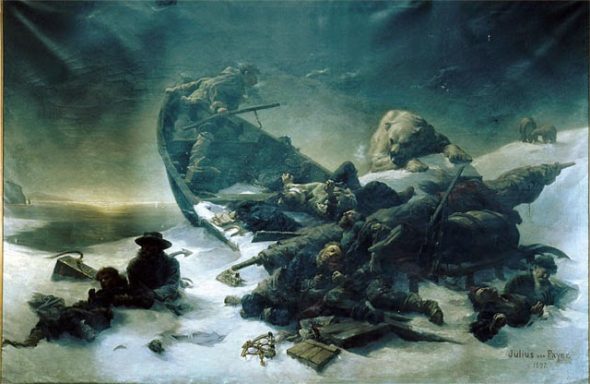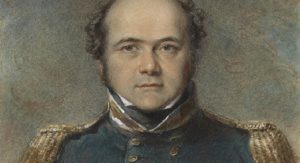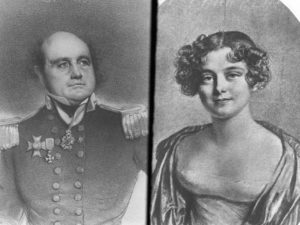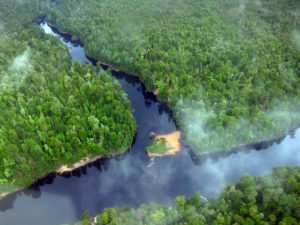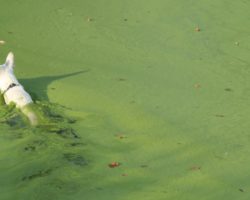Sir John and Lady Jane Franklin – Chivalry, exploration, love and death | One of the greatest love stories of the 19th century gets a new twist
The story of Sir John and Lady Jane Franklin is one of my favorites – it’s full of chivalry, exploration, daring, gallantry, love, devotion and ultimately death. For a very long time, the prevailing theory was that Sir John Franklin, a British arctic explorer, had died while stranded in the Canadien arctic of lead poisoning brought on as a consequence of absorbed lead solder – an early attempt at food preservation. Just today, however, a Canadien group published a very well done paper that throws cold water on the lead-poisoning theory. But we are getting ahead of ourselves –
Rear Admiral Sir John Franklin joined the royal navy at the age of 14, sailed around Australia in a voyage of exploration, fought at Trafalgar and participated in three expeditions to the Arctic to find the Northwest Passage around North America to Asia and led two of them. Sir John said “The failure of one expedition is but the incentive to fit out another; and the greater the danger, the greater the eagerness of enterprising and resolute men.”
Finding the Passage became a passion for Sir John, but not the only passion. Upon returning to London after the third failed attempt at the Northwest Passage, he married Lady Jane Griffin, who promised her fiancée “I should rejoice to see with you the same things for the first time, to help and be helped by you in every little difficulty…” Sir John longed to go back to the Arctic to resume his quest, but in 1836, Navy posts were scarce and he was instead installed as the governor of Van Diemen’s Land, the name the British originally gave to Tasmania. Sir John and Lady Jane explored every part of Tasmania, wrote passionately on the disappearance of Tasmanian aborigines and founded the Tasmanian branch of the Royal Geographical Society, which still exists today.
In 1845, Sir John was offered the command of the best-equipped Arctic expedition to search for the Northwest Passage. At 59, he was really too old for Arctic exploration, but Lady Jane didn’t stand in his way and in July of 1845, Sir John sailed into the Arctic and was never seen again. In the next 14 years, more than 40 expeditions were sent to find him, 21 organized by Lady Jane herself.
Lady Jane petitioned Benjamin Disreali, the British Prime Minister to continue searching for her lost husband and at the age of 78, Lady Jane actually went to Canada to look for him herself. Finally, in 1859, an expedition financed by Lady Jane and led by Scotsman John Rae brought back evidence that Sir John had spent two years alone in the Arctic and died in 1847. Initially, the belief was that Sir John died from lead poisoning as a consequence of eating food out of cans sealed with lead solder, an early experiment in preservation. The Canadien team, by using a very high-tech new type of scanning device and comparing tissue samples with known British Naval autopsies from the same period, conclude that it wasn’t lead that killed Sir John, but more likely starvation and exposure.
journal.pone.0202983Lady Jane never remarried.
Because of her efforts to find her husband, much of the Canadian Arctic was explored and mapped. The Royal Society awarded Lady Jane it’s highest achievement medal for exploration, the first woman to receive one. She also established a museum of natural history based on Greek gardens, near Hobart, named for herself. Today, you can visit there if you like. In the Southwest territory of Tasmania, you can stay in the Franklin Inn, est. 1853, or take a cruise on the Lady Jane Franklin through Strahan. Although they are remembered and beloved as a popular governor and founder of Tasmania’s school system, the real monument to their shared lives are not monuments or statues. In the heart of one of the most forbidding spots on earth, the Franklin River is joined by it’s tributary, the Jane and a brave husband and his loyal wife will be remembered together until the end of time.





